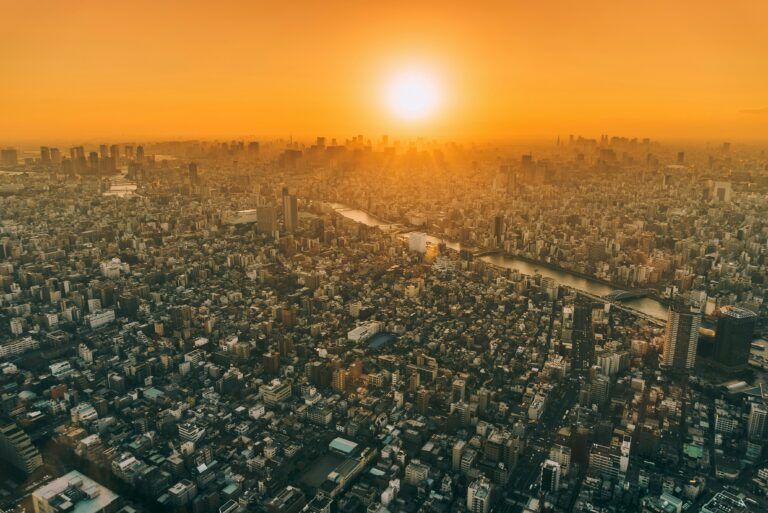(San Francisco, May 29, 2024) – Governments and businesses are failing to meet their obligations under international human rights law to protect people from rising temperatures and extreme heat events caused by climate change, Climate Rights International said in a new report released today.
The 87-page report, “‘I Can’t Cool’: Extreme Heat and Human Rights in the Context of Climate Change,” examines the impact and risks of extreme heat through a human rights lens. It offers a series of concrete recommendations for actions that governments and businesses should urgently take to protect populations from harm. Rising temperatures are already threatening the health, education, water, food, housing, and livelihoods of those alive today — and put at risk the rights of future generations. Just last week, schools were forced to close in New Delhi and other parts of northern India amidst a massive heat wave that saw temperatures reaching near 50°C (122°F).
“Extreme heat is killing hundreds of thousands of people every year, closing schools, and worsening food and water insecurity,” said Linda Lakhdhir, Legal Director at Climate Rights International. “Governments and companies must act now to protect individuals from the devastating consequences of rising heat, which are only going to get worse as climate change intensifies.”
(Please see selected quotes from interviewees in Bangladesh, Brazil, and Pakistan at the end of the press release.)
While extreme heat and extreme heat events pose risks to everyone, research has shown that some groups are more at-risk than others. Women, children, older people, pregnant people, people with disabilities, and people living in buildings not adapted for high temperatures suffer disproportionately from the impacts of extreme heat. Heat weighs the heaviest on the poorest populations with the fewest resources to adapt. Those living in densely populated and poorer neighborhoods are often exposed to more heat than those in wealthier neighborhoods, in part due to lack of vegetation density. This problem is compounded by the fact that people living in poverty are less able to afford cooling, take time off from work during heat waves, or afford treatment when suffering from the impact of extreme heat. Indeed, over a billion people in the hottest parts of the world lack access to effective indoor cooling.
Both indoor and outdoor workers are also at increased risk of experiencing heat-related harms. The International Labor Organization recently estimated that at least 2.1 billion workers each year are exposed to excessive heat, resulting in millions of occupational injuries and nearly 19,000 deaths. Despite the risks, most workers have little legal protection against being forced to work in extreme heat.
International law requires governments to take a range of concrete steps to protect individuals from the foreseeable adverse effects of climate change, including heat. Yet, in a shocking and dangerous move, on April 11, 2024, Florida Governor Ron DeSantis signed a law banning local governments from adopting requirements for mandatory water breaks and other workplace protections against extreme heat.
“Governments should be responding to global warming with measures to protect people at risk, yet Governor Ron DeSantis has signed a cruel law in one of the hottest states in the U.S. that will result in death and serious illness,” said Lakhdhir. “The U.S. Occupational Safety and Health Administration, which has been drafting guidelines on indoor and outdoor work in heat, should move quickly to put in place enforceable standards to ensure that workers nationwide are protected from heat.”
National and local governments should adopt and implement heat action plans to guide heat wave preparation and emergency response. As part of any heat action plan, governments should establish a designated chief heat officer to coordinate heat-related risk reduction and management efforts across government agencies and ensure proper funding of their activities.
Governments should also invest in and maintain effective heat early warning systems. Warnings should provide advanced notification of temperature extremes, along with advice on ways to keep cool. Such warning systems must be devised to reach populations most at risk, including those living in poverty, those with disabilities, and marginalized communities.
To protect workers, all governments should enact legally binding heat stress standards for indoor and outdoor workers based on actual weather conditions, consistent with international best practice standards, and companies should protect workers from heat even in the absence of laws requiring them to do so. While improved access to cooling is essential, increasing the number of air conditioners, most of which currently run on fossil fuels, raises its own climate concerns. The report highlights a range of passive cooling strategies that governments and companies can invest in and implement to help protect individuals from heat, including roofs that reflect heat, increasing green areas and tree cover in urban areas, ventilation corridors, and use of permeable or light covered pavements. Where active cooling is feasible, it is critical to shift to sustainable cooling from clean energy.
Businesses, too, have obligations to prevent and mitigate human rights harms, including to the health and lives of those working in their employ and in their supply chains, said Climate Rights International. Businesses must also seek to prevent or mitigate impacts that are directly linked to their operations, products or services by their business relationships, including entities in their value chain, even if they have not contributed to those impacts. Companies should establish and enforce strict policies to protect all workers against heat stress, and conduct due diligence in their own operations and their supply chains to determine whether employees are at risk of violation of their human rights due to extreme heat and take action to mitigate any risks they identify.
Rising heat is already having a devastating impact on countries that have contributed the least to the climate crisis and are least able to afford to adapt, Climate Rights International said. Because wealthy countries and companies are failing to rapidly phase out fossil fuels and move to renewable energy, the impacts will only increase. Climate justice demands that wealthier countries provide financial assistance to less developed countries to help them protect the lives, health, education, and other rights of their citizens.
“Addressing heat shouldn’t be seen as just a policy choice that can wait until governments and businesses get around to it or decide to invest in it,” said Lakhdhir. “Protection from heat is a human right that creates legal responsibilities for governments and businesses.”
Selected quotes:
Aprdous Hossein, a 74-year-old widow in Dhaka, Bangladesh, which now regularly experiences days with temperatures exceeding 40°C (104°F), said,
“I feel very bad this year because of the heat. I am feeling very sick. Because I am too hot. I cannot cool.”
Muhammad Yusuf, who washes cars in Karachi, told Climate Rights International,
“Sometimes I feel like my whole body is shaking and I also feel dizzy when I perform physical labor [in the heat] like washing cars. I also get tired easily, but I have to work because if I don’t, I won’t earn a living.”
Olisil Oliveira, who lives in the Amazonian region of Pará State in Brazil, explained,
“It’s much hotter. People are going to work in the fields around 6am, because at 8am it’s already too hot. Before, they would leave at 8am to go work, today they come back at 8am because they can’t take the hot sun anymore.”
Dr. Aliya Saidi, a doctor in Karachi, explained the kinds of cases she is seeing to Climate Rights International,
“Patients come to us with various symptoms of heat-related illness. These include excessive sweating, low blood pressure, panting, dizziness, restlessness, vomiting, muscle ache, headache, and exhaustion.”
Photo Credit: Aerial photo of city by Arto Marttinen. Unsplash license.







